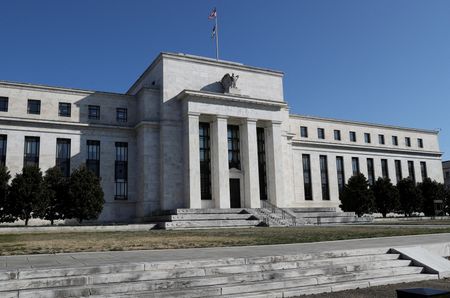

By Lucia Mutikani
WASHINGTON (Reuters) – U.S. employers likely hired the fewest workers in 14 months in June, but the jobless rate probably remained near pre-pandemic lows, underscoring labor market tightness that could encourage the Federal Reserve to deliver another 75-basis-point interest rate increase later this month.
Despite the anticipated slowdown in job growth last month, the Labor Department’s closely watched employment report on Friday could ease fears of a recession that have mounted in recent days following a raft of tepid economic data, ranging from consumer spending to manufacturing.
While demand for labor is cooling in the interest rate-sensitive goods-producing sector of the economy, businesses in the vast services industry are scrambling for workers. There were 11.3 million job openings at the end of May, with 1.9 jobs for every unemployed person.
“It’s very, very difficult to get a recession with so many job openings,” said Jonathan Golub, chief U.S. equity strategist at Credit Suisse in New York. “In reality, a recession, more than anything else, is a collapse in the labor market, a spike in the unemployment rate, and right now, we’re not seeing anything that looks like that at all.”
Nonfarm payrolls likely increased by 268,000 jobs last month after rising by 390,000 in May, according to a Reuters survey of economists. That would be the smallest gain since April 2021 and just more than half of the monthly average of 488,000 jobs this year. Estimates ranged from as low as 90,000 to as high 400,000.
Still, the pace would be well above the average that prevailed before the COVID-19 crisis and would leave employment about 554,000 jobs below the pre-pandemic level.
Most industries with the exception of leisure and hospitality, manufacturing, healthcare, wholesale trade and local government education have recouped all the jobs lost during the pandemic. The unemployment rate is forecast to be unchanged at 3.6% for a fourth straight month.
The Fed wants to cool demand for labor to help bring inflation down to its 2% target.
The U.S. central bank’s aggressive monetary policy posture has heightened recession worries which were amplified by modest growth in consumer spending in May as well as soft housing starts, building permits and manufacturing production.
In June, it raised its benchmark overnight interest rate by three-quarters of a percentage point, its biggest hike since 1994. Markets overwhelmingly expect the Fed, which has increased its policy rate by 150 basis points since March, to unveil another 75-basis-point hike at its meeting later this month.
The release next Wednesday of inflation data for June, which is expected to show consumer prices accelerating, is also seen giving policymakers ammunition to raise borrowing costs further.
TIGHT LABOR MARKET
“We still have a very tight labor market, which argues for the Fed to move policy to restrictive territory,” said James Knightley, chief international economist at ING in New York.
“Coupled with elevated and still rising inflation, this gives the Fed the excuse to push ahead and indeed tighten by 75 basis points.”
The June payrolls could surprise on the downside because of issues with the seasonal factors, the model that the government uses to strip out seasonal fluctuation from the data, following the upheaval caused by the pandemic.
Unadjusted payrolls increased by the most on record in June 2020 as the economy emerged from the first wave of COVID-19, a feat that is unlikely to be repeated.
“But the June 2021 seasonal factor was more ‘aggressive’ than normal in terms of anticipating job growth, and we think the June 2022 seasonal factor may also end up being ‘stronger than normal,’ which could bias the seasonally adjusted data lower,” said Daniel Silver, an economist at JPMorgan in New York.
Job growth last month was likely led by the leisure and hospitality sector. That, together with gains elsewhere, would help the private sector to recoup all the jobs lost during the pandemic, even as leisure and hospitality employment remains in a hole. Construction payrolls likely declined as surging mortgage rates curbed homebuilding.
Financial sector employment is also expected to have decreased, reflecting a softening in real estate hiring amid slowing home sales.
Manufacturing payrolls are seen increasing despite a move by technology giant and electric vehicle manufacturer Tesla to lay off hundreds of its American workers.
With the labor market still tight, employers likely continued to raise wages at a steady clip last month.
Average hourly earnings are forecast to have increased 0.3% for a third straight month. That would lower the year-on-year increase to 5.0% from 5.2% in May.
While annual wage growth has decelerated from 5.7% in January, wage pressures remain robust. Labor costs surged in the first quarter and the Atlanta Fed’s wage growth tracker continues to run strong.
The average workweek in June is seen holding at 34.6 hours for a fourth straight month.
“If businesses start cutting hours, that would be a bad omen,” said Ryan Sweet, a senior economist at Moody’s Analytics in West Chester, Pennsylvania.
(Reporting by Lucia Mutikani; Editing by Paul Simao)

